What is lace?
Lace
is a fine fabric that is manufactured with yarn or thread in an open weblike
pattern made by machine or hand. Basically, linen, silk, gold, or silver thread
was used. Now laces are produced with cotton yarn, although linen and silk threads
are still available. The lace produced can be made with synthetic fibers. Some
modern artists make lace with fine copper or silver wire instead of yarn.
Types of lace
There are different types of lace we found, such as below-
Alencon lace
Alencon
lace is a needle lace that originated in the French city of Alencon. It's
sometimes called Lace Queen. The Jean-Baptiste Colbert began making lace in
Alencon in the 16th century during the reign of Louis IV, and in 1665
established a Royal Workshop in the city for making Venetian-style lace. The
purpose of the establishment was to reduce the French court's reliance on
expensive foreign imports. Marthe La Perriere changed Venetian tactics and
Alencon emerged as a unique style in 1675 after the end of Colbert's monopoly.
Needle lace
Needle
lace is a type of lace that is made by sewing hundreds of small stitches to
create lace using needles and threads. In its purest form, the only tools and
materials used are needles, threads, and scissors. The source of the needle's
eye is the pre-16th century in Italy and its sources can be found in the
openwork of the linen technique called Reticella. Stitching protects the
threads of heavy guides on a hard background with a stitch. When the work
begins, a variety of styles are developed that can be removed later. When the
whole area is covered with stitches, the position stitches are revealed and the
lace moves away from the paper. Needle lace is also used to make fillings or
inserts in cutwork.
Bobbin lace
Bobbin
lace is a lace textile made by braiding and twisting yarns of length, which are
wound into bobbins to handle them. As the work progresses, the weaving is done
with the placement of the pin on the pillow of the lace, the placement of the
pin is usually determined by a pattern or pinned to the pillow. It is also
called pillow lace because it was worked on pillows, and bone lace because
early bobbins were made of bone or ivory. Bobbin lace is one of the two main
divisions of handmade lace, the other is the needle, derived from the former
cutwork and reticella. Bobbin lace can be made with thick or fine threads.
Generally, it was made from linen, silk, wool, or later cotton thread or
precious metal. Today it is made with various natural and synthetic fibers and
wires and other filaments.
Armenian needlelace
Armenian
needle lace is an authentic form of needle lace that is made using only a
needle, yarn, and a pair of scissors. Like lacis or filet lace, Armenian
needlelace seems to be the prominent descendant of net making. Where the
lacquer net adds decorative stitching to the ground, the Armenian needle mesh
decorates itself. The lace is made by tying a knot, usually by tying the
previous round of the piece to form small loops with which the next round of
knots can be tied. Patterns vary in the length of the loops, missing loops from
the previous round, adding additional loops, and being created by other
nationals. The lace can be made directly over the hem of the edge when used as
aging. When starting a doily or freeform object, a series of loops will be tied
to a slip knot that is pulled tight to complete the first round.
Battenberg lace
Battenberg
lace is a type of tape lace that was often used as edging and was especially
popular in the United States in the 19th century. The name of this American
lace was chosen in honor of a wedding of the Battenberg family, which took
place in Washington, D.C. while applying for a patent for lace-making,
19th-century tape laces using cheap machine-woven tape as an outline, and the
availability of this commercial tape is popular in Battenberg. Originally
Battenberg's lace was heavier than other machine tape laces, like Princess
Lace. Some consider Battenberg's lace to be a kind of Renaissance lace. Others
consider Renaissance lace to be a different type of tape lace.
Chantilly Lace
Chantilly
Lace is a handmade bobbin lace made from a 17th-century tradition named after
the French town of Chantilly. It was also produced in the nineteenth century,
but it was not actually made in the Chantilly region, but in the French Norman
town Bayeux and now in Geraardsbergen, Belgium. Chantilly Lace is known for its
fine ground, outline pattern, and lots of detail. The pattern has been
converted to cordonnet, this is a flat unstitched strand. The best Chantilly
laces were made of silk and were usually black, which made them suitable for
show wear. White chandelier lace was also made in both linen and silk, although
most Chantilly laces were made of silk and black silk Chantilly lace became
particularly popular and there was a large market for it in Spain and America.
Chantilly and Spanish lace were the most popular black lace. Small white
Chantilly was ever made. Another notable thing about Chantilly lace is the use
of one and a half and full stitches to achieve a light and shadow effect on the
pattern, which was usually floral.
Filet lace
Filet
lace is a common term used for various embroidery techniques. It is handmade
embroidery which is made by embroidery using a long blunt needle and a thread
on the ground of filet work made of a woven net lace or of the same size or
square or diagonal litter of different sizes. Lacis uses the same technique but
is made of Leno-like woven fabric or small canvas, not guitar lace. The
result of knotting a diagonal or square fabric is to create an open fabric called
filet-work lace. A knotted net lace-making tool for measuring debris is a
shuttle needle and gauge stick. Knotted ground lace can either be made by
lace-making or purchased commercially in 2003 by handmade or machine-made
varieties. Anchor the piece with hand mesh made with a shuttle needle and a
gauge, using a cushion around a heavy cushion, a chair, or a worker’s leg.
After having a secure anchor to maintain tension, a new mesh is added to each
row, starting at an angle from a square to the desired size, then lowered. The
individual meshes are formed on a gauge which helps to ensure an even size and
is made with a loop knot in the previous round: square mesh, diagonal mesh,
circular, free form. Using very fine threads and gauges of different sizes can
create a beautiful and delicate lace.
Limerick lace
Limerick
laces are a specific class of lace obtained from Limerick in Ireland that was
subsequently produced throughout the country. It originated from the invention
of the machine that made the net in 1808. John Heathcote Devon made the net in
1815. Until the invention of the net-making machine, the handmade net was an
expensive fabric. This meant cheap net Irish lace makers became readily
available, especially after 1823 when Heathcote's patent expired. Limerick lace
is a hybrid lace with embroidered needle lace or crocheted lace on the net base
made by the machine. It is not true lace but a mixed lace, which will be made
entirely by hand. Limerick lace comes in two forms: tambour lace, which is made
by drawing a thread with a hook by pulling the mesh over a frame like a
tambourine, and needle run lace, which is made using needles for embroidery in
the net background.


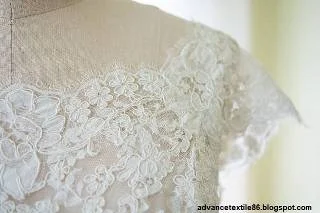
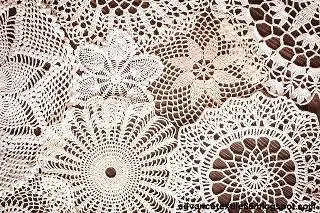

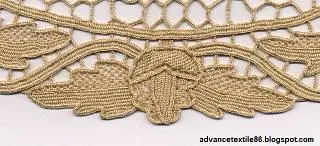
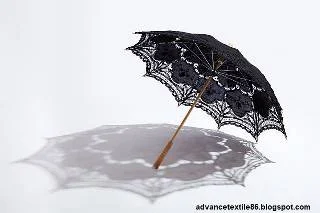
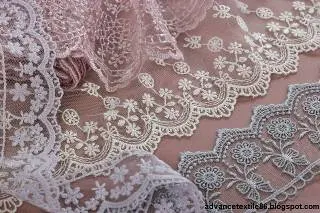
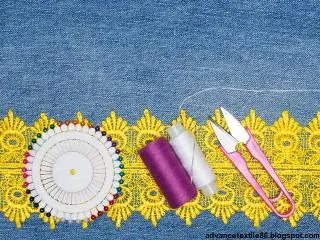








0 Comments